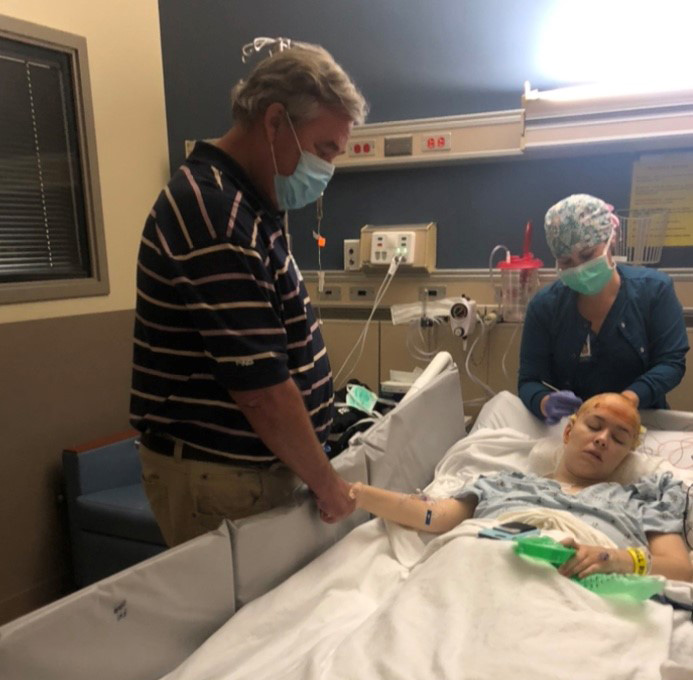Media contact: Bob Shepard
 Neurosurgeons with the University of Alabama at Birmingham have performed the first radiofrequency ablation for epilepsy in Alabama. Ablation uses heat energy to remove lesions in the brain responsible for epileptic seizures. It is a minimally invasive procedure that provides a treatment option for patients who have drug-resistant epilepsy offered through UAB Medicine.
Neurosurgeons with the University of Alabama at Birmingham have performed the first radiofrequency ablation for epilepsy in Alabama. Ablation uses heat energy to remove lesions in the brain responsible for epileptic seizures. It is a minimally invasive procedure that provides a treatment option for patients who have drug-resistant epilepsy offered through UAB Medicine.
The first procedure was performed by Kristen Riley, M.D., and Nicole Bentley, M.D., in the Department of Neurosurgery at the UAB Heersink School of Medicine. Alabama native Ashley Williard was the inaugural patient.
Epilepsy diagnosis
Ashley's journey with epilepsy began early in life when the doctors identified her mother’s negative platelet antigen while Ashley was in the womb. As a result, antibodies began attacking Ashley’s platelets, causing a brain bleed. She started experiencing balance issues around 18 months old and was diagnosed with a cyst in proximity to her brain stem soon after. She had surgery to drain the cyst, then began to have infrequent generalized seizures, which continued throughout high school.
Through it all, Ashley enjoyed ballet, swimming, cheer and tennis. She attended Troy University and earned her bachelor’s degree in hospitality, sports and tourism management.
She eventually needed medications to control her seizures, which increased in frequency to about twice a week during college. She ultimately was referred to the UAB Epilepsy Center and evaluated by Zeenat Jaisani, M.D.Zeenat Jaisani, M.D., in the Department of Neurology before meeting with Riley and Bentley in March 2021.
Treatment at UAB
A few months later, Ashley made the brave decision, alongside her care team led by Riley and Bentley, to proceed with an exploratory surgery called stereo-electroencephalography, or SEEG, to determine the location of her seizures.
“They shaved my head, drilled holes, and placed electrodes directly in my brain to monitor and determine where the seizures were coming from,” said Ashley.
She was weaned off seizure medications and monitored in the hospital for nine days.
“Day eight was very hard for me until Dr. Riley came into my room to share the good news: I was a perfect candidate for the RFA procedure!” said Ashley.
 RFA is commonly performed following identification of the seizure onset zone through SEEG.
RFA is commonly performed following identification of the seizure onset zone through SEEG.
One of the electrodes precisely identified the location of the lesion responsible for the seizure activity. Riley explained to that Ashley they would use heat energy generated by a laser to ablate this particular area and there was a 50 percent chance that she would walk away seizure-free.
After the ablation is completed, a follow-up MRI scan is obtained and the laser is removed. The patient goes to the recovery room for a few hours before moving to overnight observation, prior to discharge the following day.
Life today
Since her RFA procedure, Ashley has been seizure-free for over six months.
“I will be able to drive again next month, and I am more confident knowing I can go places without having a seizure,” she said. “My family and I have a strong faith, and I consider my healing a true miracle. I prayed God would heal me, and He did. I am also thankful that I was introduced to another person during the hospital stay who had a similar experience to me. She was very supportive and was there when I needed someone to talk to. I actually gained a new friend.”
Ashley says she is beyond grateful for the UAB medical team, staff and clinicians who took care of her.